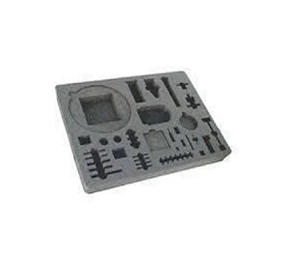Selecting the right foam insert for your specific needs can greatly impact the protection, organization, and functionality of the items you're storing or transporting. Foam inserts are widely used in various industries, from packaging and tool storage to custom cases and equipment protection. This guide will help you understand the key factors to consider when choosing foam inserts, ensuring that you make an informed decision.
One of the first things to consider when selecting foam inserts is the type of foam material. Different types of foam offer varying levels of durability, cushioning, and resistance to environmental factors. For instance, polyethylene (PE) foam is a popular choice for its rigidity and water resistance, making it ideal for heavy items or equipment that needs robust protection. On the other hand, polyurethane (PU) foam is softer and more flexible, providing excellent cushioning for delicate or lightweight items. Understanding the material characteristics is crucial in determining which foam inserts will best suit your needs.
Another important factor is the thickness and density of the foam inserts. The thickness determines the level of protection, while the density affects the foam's ability to absorb shock and resist compression. High-density foam inserts are ideal for items that require strong support and minimal movement, such as electronic devices or precision instruments. In contrast, lower-density foam is better suited for items that need gentle cushioning or are not prone to damage. When choosing foam inserts, consider the weight and fragility of the items you need to protect, as this will guide you in selecting the appropriate thickness and density.
Customization is another key aspect of choosing foam inserts. Many foam inserts can be custom-cut to fit the exact shape and size of the items they will hold. This ensures a snug fit, preventing movement during transportation and providing maximum protection. Whether you're storing tools, camera equipment, or delicate instruments, custom foam inserts can be tailored to meet your specific requirements. Additionally, consider whether you need a foam insert with multiple compartments or layers to organize multiple items within a single case.
Lastly, consider the environment in which the foam inserts will be used. If the items will be exposed to moisture, chemicals, or extreme temperatures, you’ll need foam inserts that can withstand these conditions. Certain foams are designed to be resistant to environmental factors, ensuring that your items remain protected in harsh conditions.
In conclusion, choosing the right foam inserts involves considering the material, thickness, density, customization options, and environmental factors. By evaluating these elements based on your specific needs, you can select foam inserts that provide optimal protection and organization for your valuable items.


